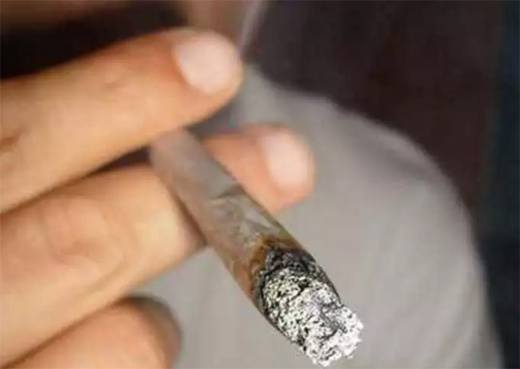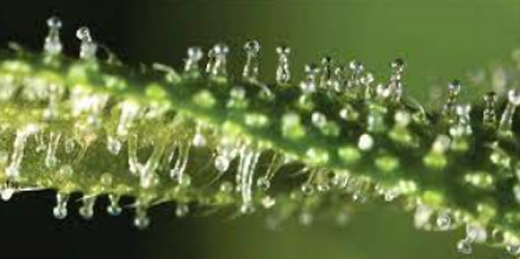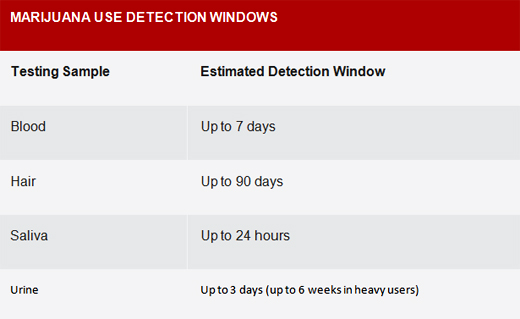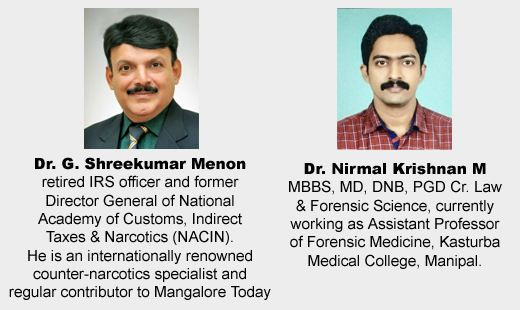Forensic detection of Narcotic Drugs: Peering through the cannabis smokescreen
Forensic detection of Narcotic Drugs: Peering through the cannabis smokescreen
Mangalore Today News Network
By Dr. G. Shreekumar Menon & Dr. Nirmal Krishnan M.
Mangaluru, Dec 1, 2021: Cannabis is the most widely cultivated, trafficked and abused illicit drug. Half of all drug seizures worldwide are cannabis seizures. The geographical spread of these seizures is also global, covering practically every country of the world. About 147 million people amounting to 2.5% of the world’s population, consume cannabis. In the present decade, cannabis abuse has grown rapidly, especially among the student community. Cannabis has become very closely associated to youth culture. According to UNODC World Drug Report 2020 Cannabis users comprise the largest number of illicit drug users (129-190 million people), in the world.

Youth simply love the heightened excitement that Cannabis can give. When THC the major chemical in Cannabis hits the brain cells, it causes them to release Dopamine, a feel-good brain chemical. This is a part of the brain’s reward system, which makes one feel happy, when doing activities like eating and having sex. But Cannabis is also regarded as a great relaxant. Steve Jobs, the founder of Apple Inc, has this to say "The best way I would describe the effect of marijuana and hashish is that it would make me relaxed and creative."
From Steve Jobs to Lady Gaga, many creative-minded individuals have used cannabis to relax and stoke their imaginations.
Throughout history, cannabis has been used by many different cultures to impact mood and open up the mind and senses. In India,the sacred Hindu texts, the Holy Vedas, listsCannabis as one of the five sacred plants, that are beneficial for humanity. Among its many uses, Cannabis is celebrated for its ability to increase joy and happiness and reduce fear—a recipe for relaxed imaginative thinking. Cannabis helps people detach from their day-to-day mindset—to transcend to a different way of perceiving and experiencing the world, hence its immense popularity among youth.But many intellectuals also use Cannabis to achieve“superior convergent thinking" which means the deliberate and focused aspect of creative decision-making. Cannabis also interacts with the brain’s frontal lobe, which is associated with creative activity. By stimulating the frontal lobe, cannabis helpsexplore a new world of colours, surfaces, processes, and patterns.But Cannabis may impair thinking, memory, and learning functions.Cannabis use has also been linked to other mental health problems, such as depression, anxiety, and suicidal thoughts among teens. Users also have less academic and career success. Hence, Cannabis use is discouraged by governments and enforcement agencies.
Offenders are routinely apprehended from hotels, rave parties, discos and residential complexes. How exactly do enforcement agencies determine the consumption of Cannabis?
A drug testneeds to be done to arrive at a positive conclusion that drugs have been consumed. A drug-test looks for the presence of one or more illegal or prescription drugs in the urine, blood, saliva, hair, or sweat of the accused person. Urine testing is the most common type of drug screening.A drug test generally requires that the accused has to give a urine sample in a lab. The accused will be given instructions to provide a "clean catch" sample. The clean catch method includes the following steps:
1. Washing hands
2. Cleaning genital area with a cleansing pad given by the lab. Men should wipe the tip of their penis. Women should open their labia and clean from front to back.
3. Start to urinate into the toilet.
4. Move the collection container under the urine stream.
5. Collect at least an ounce or two of urine into the container, which should have markings to indicate the amount.
6. Finish urinating into the toilet.
7. Return the sample container to the lab technician.
Generally, a medical technician or other staff member from the concerned enforcement agency will be present when the urine sample is being taken.
For a blood test for drugs, a blood sample will be collected into a test tube or vial.
For a law enforcement agency, the detection of cannabis depends on what kind of cannabis preparation is used by the accused. The difficulty is faced when someone uses various preparations of cannabis, rather than in a pure form. Adulterated cannabis can also pose a problem.
The gravity of the offence varies based on the part of the plant used too. Hence, the best form of identification and detection if a plant part is obtained is Microscopy. The characteristic trichome distributed in different parts of the plant, are still the main identification feature. These structuresof trichomescan be visualised even if the cannabis is powdered into minute particleseven tosizes of micrometres.

Any form of cannabis can be detected using a variety of chemical reactions. Some are as simple as a using a standard reagent like Duquenois – Levine reagent or Beam’s test for a colour reaction and some which can employ azo dyes which can stain it during a Thin Layer Chromatography (TLC) test.TLC is a chromatography technique used to separate non-volatile mixtures. Thin-layer chromatography can be used to monitor the progress of a reaction, identify compounds present in a given mixture, and determine the purity of a substance.
Cannabis if consumed, then the possible identification is using the tests conducted on urine, blood, saliva and hair samples and which is mainly aimed at detection of Tetra Hydro Cannabinol (THC) in the blood or its metabolites.Since the compound THC and its metabolites in the form of 9-carboxy-THC, is highly soluble in fats present in the body, it does not get excreted easily through water. The traces of the pure THC and its metabolites can be detected in the urine even after 3 to 10 days. In chronic users, the detection can be made even after 30 days of cessation of consumption.
The easiest method of detection in urine is the dipstick method which gives a line of positive test and control adjacent to it, similar to a urine pregnancy test. Butthese tests can tell only the presence or absence of THC. The quantification of the amount can be done using Gas Chromatography (GC) and High Pressure Liquid Chromatography (HPLC) methods which can be used for a rough estimate of the amount consumed.
The saliva is another excellent sample for testing the presence of THC using similar tests for urine, but the window is limited to a maximum of 72 hours from the last intake.
The hair has always remained a good source for identifying the presence of THC for a longer period as an inch of hair growth takes approximately 60 - 90 days which can then give details about the exposure to cannabinoids in the entire growth period. The hair which grows slower, like body hair allows a larger time frame.
In the blood, if looked for THC, the presence will be minimal after 24 hours as it can undergo metabolism, or may be absorbed into fat tissues.Hence urine and hair remain the best sources for detection of cannabis consumption.
In the recent much hyped Aryan drug scandal case, the Narcotics Control Bureau (NCB) did not take blood and urine samples of the accused.

Senior Advocate who made arguments in favour of Aryan Khan, told the Bombay HC that even if there was an intention to consume the contraband, it should not apply as a medical test had not been done to support the same. The Court also noted that the accused parties in the case had already suffered incarceration for almost 25 days and the prosecution had not even conducted a medical examination on them so as to determine if they had consumed drugs.
Cannabis/Marijuana can be detected for a period of days, weeks, or months after use. The length of this detection window depends on the amount and frequency of Cannabis/Marijuana used as well as the sample type:

Medical testing if not done on the accused, will prove fatal for any drug case. Success of any drug-case ultimately depends on the medical analysis.
Writers can be contacted at: shreemenon48@gmail.com and drnirmalknambiar@gmail.com

- Need For ‘Students, Alcohol and Drugs’ survey
- New Synthetic Drugs Trapping Youth
- Mood Modifying Chips - Future of Drug Use
- Ramping up Indo-Bangla border security
- IITM- A premier educational Institution in a forest. What can we learn?
- Former PM, Manmohan Singh: Notable laws passed under his tenure
- Hashish on Ratnagiri Seashore
- The Poor cry out to Us: Do we respond?
- Clandestine Meth Labs Sprouting Across India
- Hydro ganja from Bangkok latest craze among youth in India
- "Memories to Treasure" Dr.Michael Lobo’s new book
- Dominance of Private Universities: Will it make education inaccessible to underprivileged students?
- Monti Phest: A rich heritage of South Canara
- Kashmir Bhavan in Bengaluru: A must visit place
- "MAI and I" Book of Angelic Emotions
- Draupadi Murmu - The New ’President of India’
- Anthony Ashram in the city grows a classic museum
- First College of Fisheries in India - A Golden Jubilarian
- Flushing Meadows - A Vintage Mansion
- The Colonel�s Bequest
- A Mangalorean PM and his RBI Governor Brother: The Extraordinary story of the Benegal Brothers
- There is no higher religion than Truth: Theosophical Society
- L�affaire - Ashu & Yiju of Mangalore
- Mangalore in Kowloon
- 1568 to 2018 AD: 450 years of Christianity in Mangaluru
- Vice President elect Naidu moves on from nadir to zenith, the phenomenal journey
- Embracing the Outdoors: How Heated Jackets Are Revolutionizing Cold Weather Activities
- Efficient and Sustainable Packaging Solutions with FIBCs
- The Hybrid Kilt Revolution | Where Tradition Gets Trendy
- Affordable Elegance | Embrace Style on a Budget with Cheap Kilts
- Unleashing Style and Functionality | Exploring Tactical Kilts
- Mangalore’s Heroic Lady marks 105th Birthday
- Santa the Christmas spirit
- Geriatric care: Mangalore strikes a fine balance
- The Don Who Made Two Empires to Clash
- CHITRAPUR SARASWATS - A Great Kanara Community
- Our new President Ram Nath Kovind’s significant journey to Rashtrapathi Bhavan
- Marriages made in heaven, big fat weddings made in India
- Eid insight - The giver of glad tidings
- CITY INFORMATION
- TRAVEL
- TOURIST INFORMATION
- HEALTH CARE
- MISCELLANEOUS




 Write Comment
Write Comment E-Mail To a Friend
E-Mail To a Friend Facebook
Facebook Twitter
Twitter  Print
Print 


